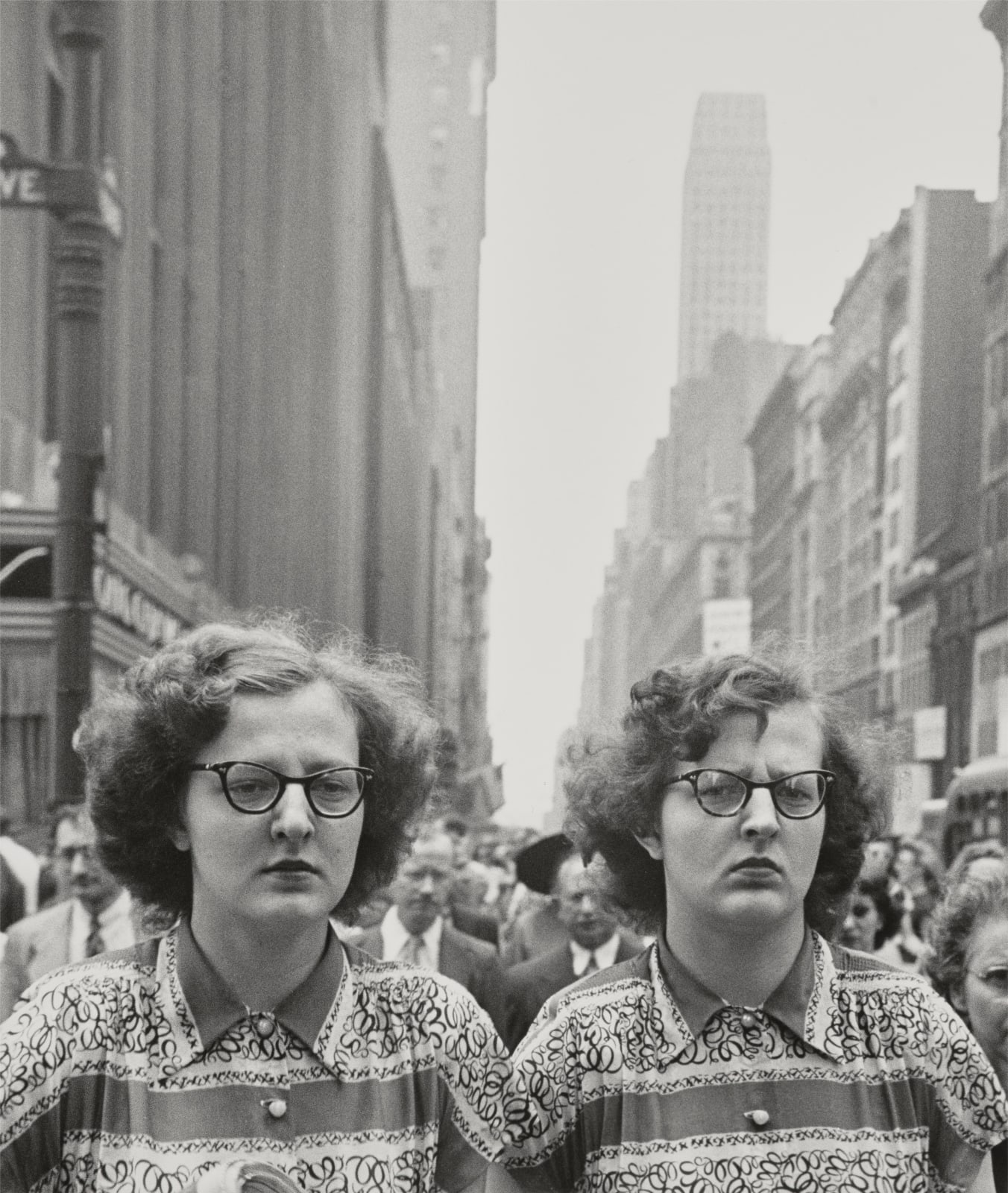
Louis Faurer American, 1916-2001
Printed by Chuck Kelton, 1980-81.
.
Paper: 35.5 x 28 cm / 14 x 11 in
.
This 1948 photograph by Louis Faurer captures two identically dressed women on a New York City street, creating a powerful visual metaphor for post-war American conformity. Faurer (1916-2001) was a key member of the New York School of street photographers, working alongside Robert Frank and Diane Arbus.
The image represents one of Faurer's most significant works from his "important years" (1946-1951), when he photographed daily in Times Square. The twin motif predates Diane Arbus's famous twin photographs by twenty years, establishing Faurer as an overlooked pioneer of street photography.
The gelatin silver print, created by Faurer himself in 1980, demonstrates his mastery of composition and tonal qualities. His aesthetic drew from film noir, employing "graphic contrasts, reflections and distortions" with characteristic "evocative lighting" and focus on psychological states.
The photograph functions as penetrating commentary on 1948 America's emphasis on conformity and standardization. The women's synchronized appearance—matching patterned shirts and horn-rimmed glasses—against the urban backdrop suggests both comfort and psychological cost of modern conformity.
Edward Steichen included Faurer's work in important MoMA exhibitions, including "The Family of Man" (1955). Robert Frank praised Faurer as "an extraordinary artist" whose eye captured the "lonely 'Times-Square people'" with deep sympathy.
The work transcends documentation, representing what the Philadelphia Museum of Art called photography "closer to poetry than journalism," offering enduring insights into urban modernity and the human condition.